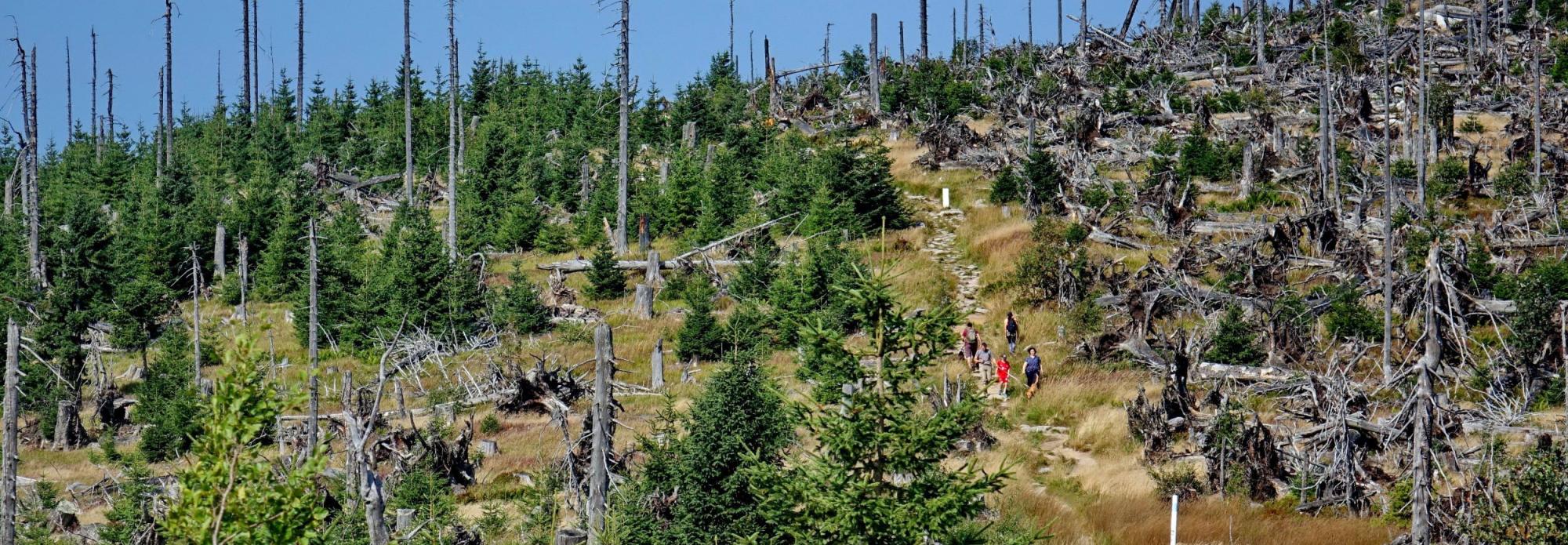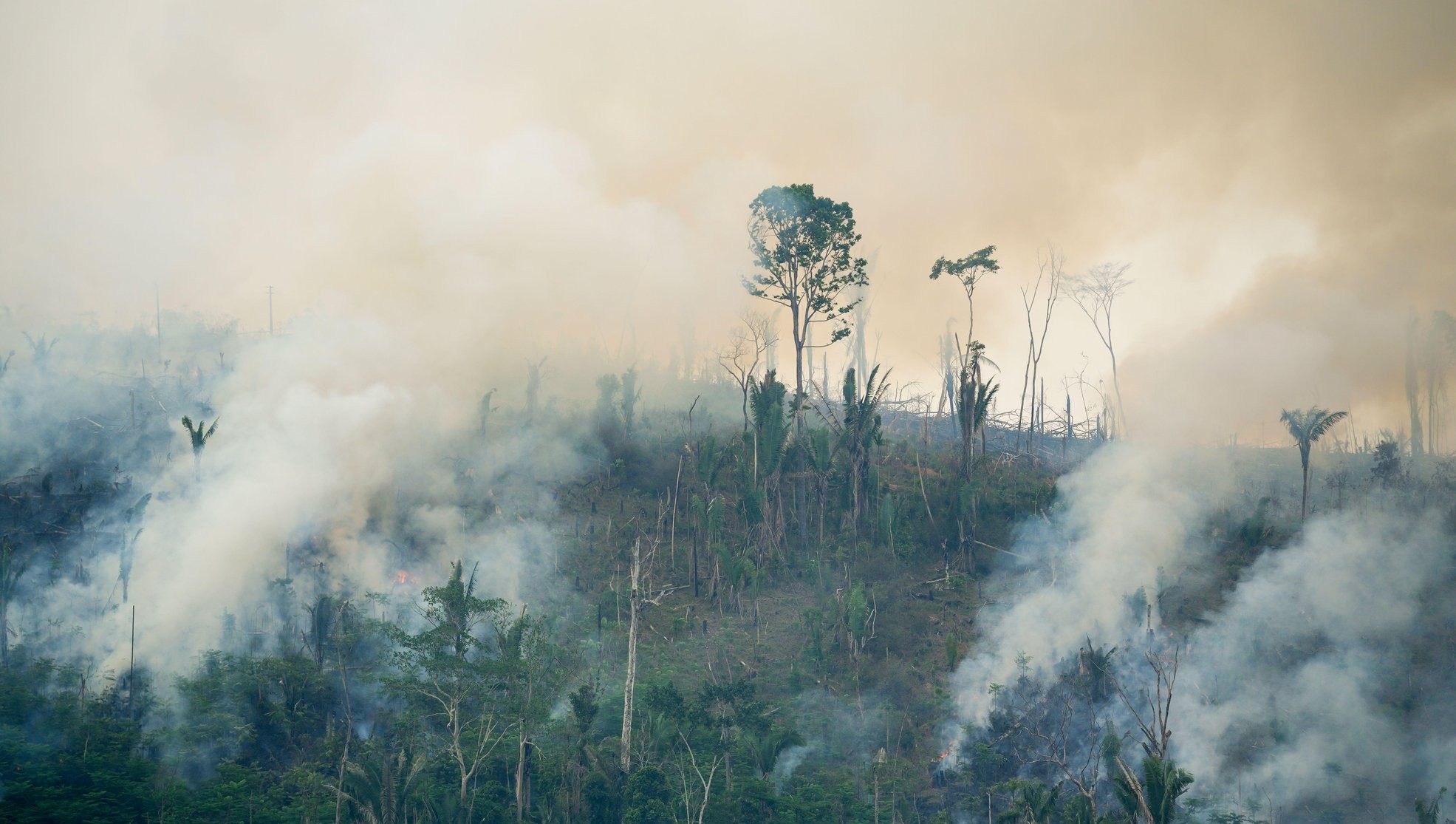GFW Technology Offers Options to Combat Mexico’s High Rate of Tree Cover Loss
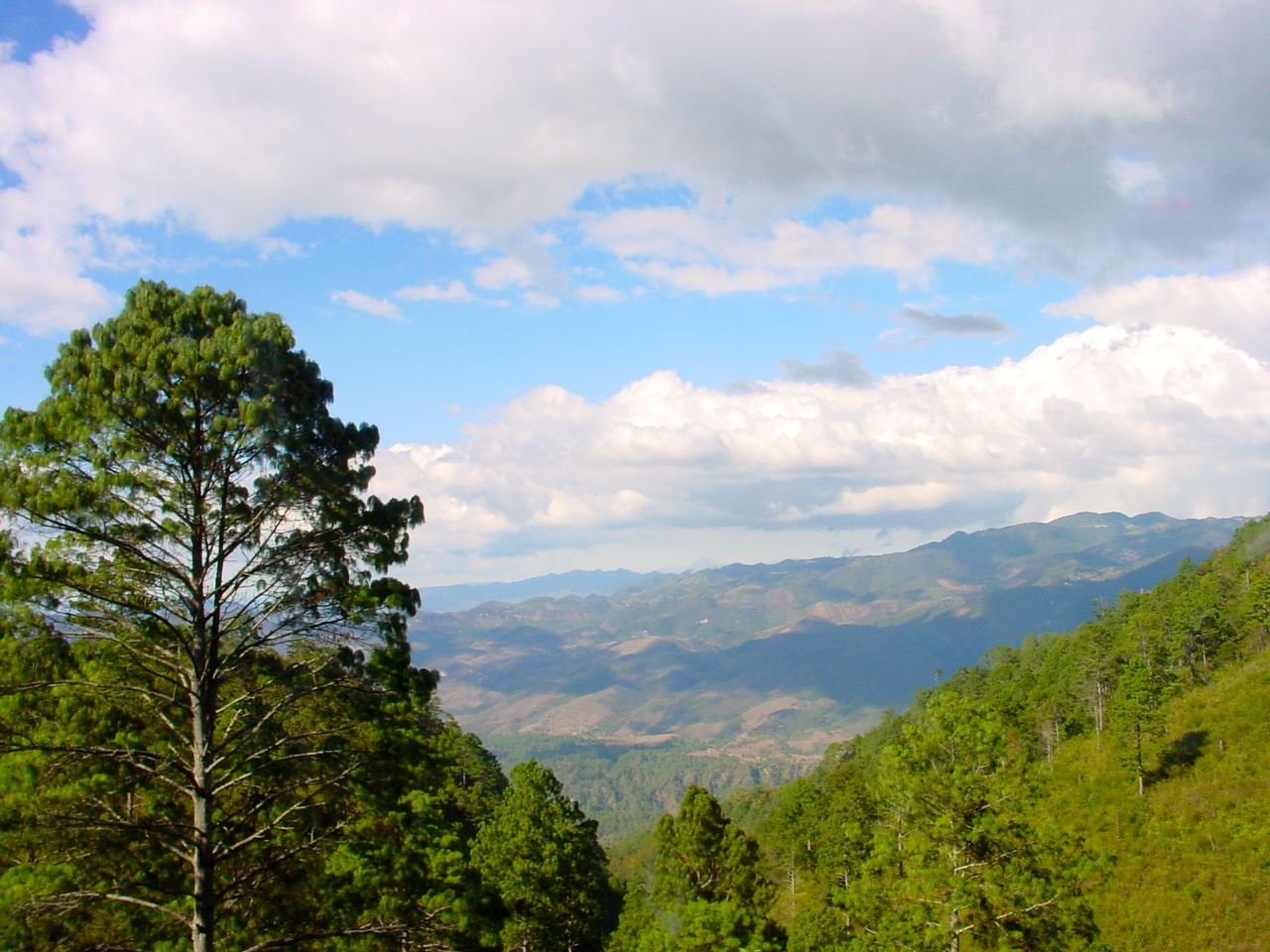
Despite efforts to reduce deforestation, tree cover loss in the tropics has increased during the last decade. Conversion of forests for agriculture and logging continue to propel large-scale deforestation.
Data from Global Forest Watch (GFW) shows more than 24.7 million hectares of tree cover were lost around the world in 2018, an area approximately the size of Great Britain. Nearly half of this loss, about 12 million hectares, occurred in the tropics.
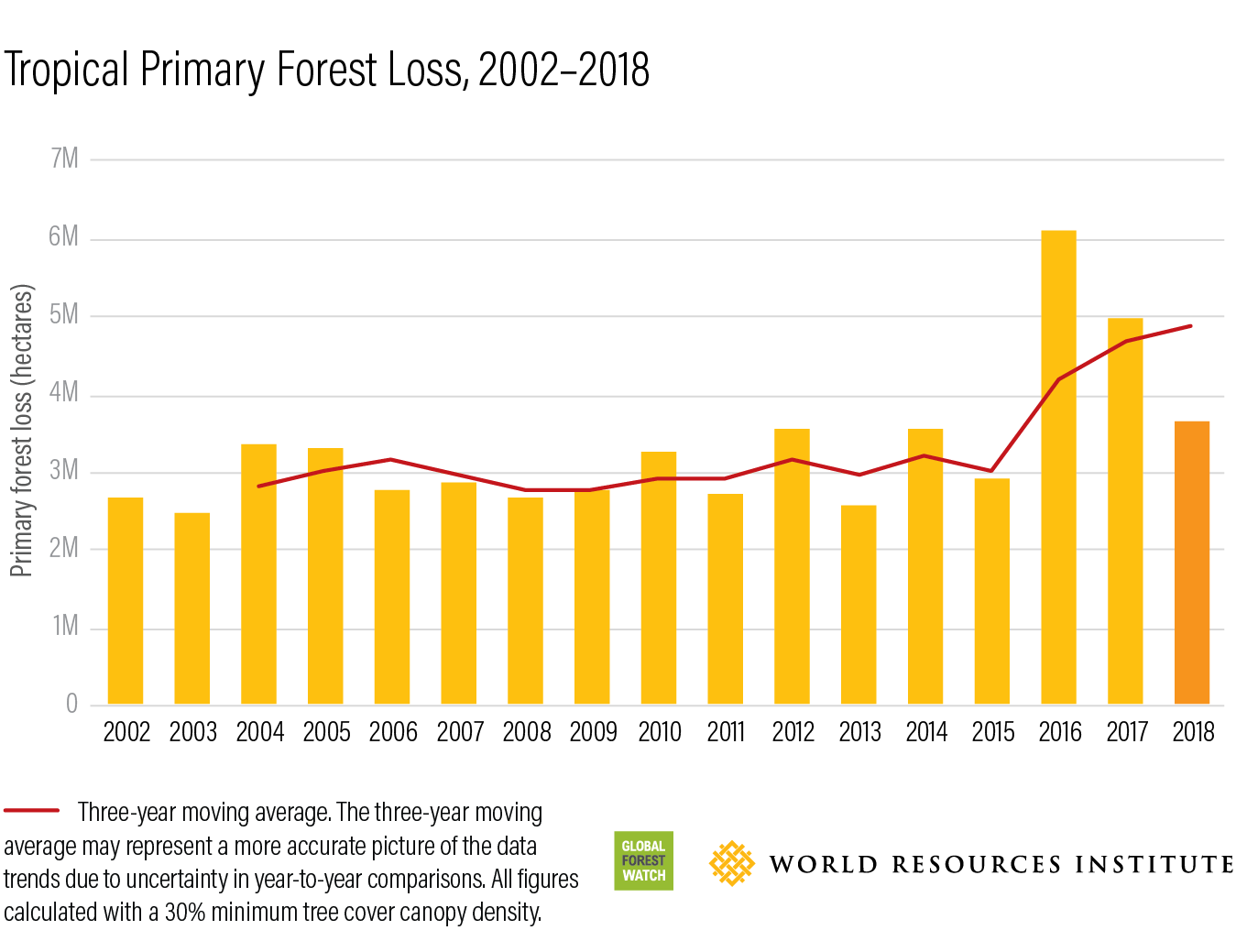
How did Mexico’s forests fare?
Mexico lost over 267,000 hectares in 2018, placing it in the top twenty countries with highest loss. Loss in 2018 was the third highest in the last decade for Mexico.
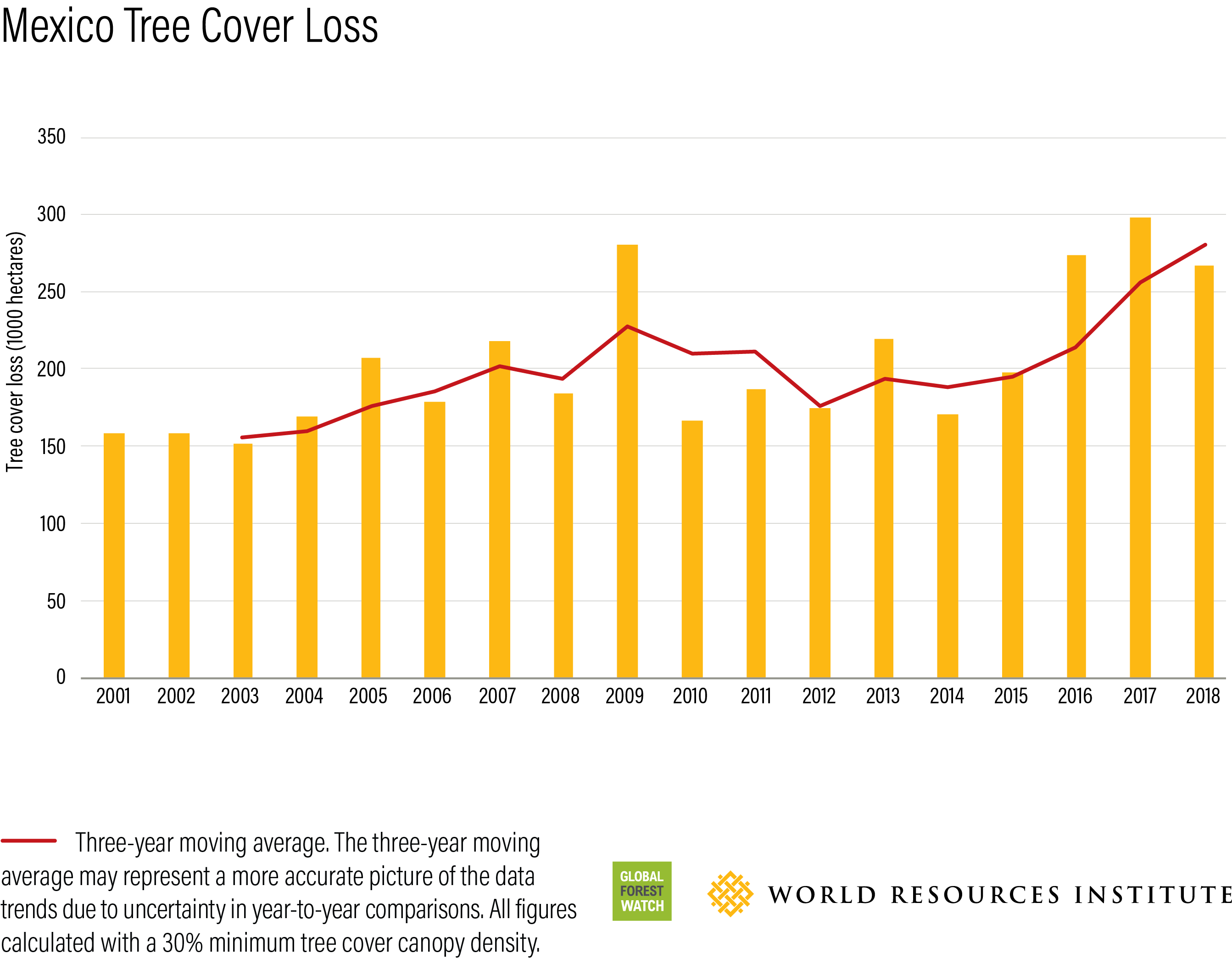
Roughly one third of Mexico’s territory is covered by forests and the loss in 2018 represents a 0.5 percent loss of the country’s total forest cover. Four states in the south of the country — Chiapas, Campeche, Oaxaca and Veracruz — comprised more than half of the national loss. Chiapas alone lost 54,000 hectares, accounting for 20 percent of the total national loss.
What is driving loss in southern states?
The biggest drivers of forest degradation and tree cover loss include overexploitation and illegal logging, disease, pressure from growing populations, forest fires and clearing for livestock ranches or agriculture. Mexico’s current institutional and legal framework prioritizes agriculture over sustainable forestry. In 2017, four municipalities that form the protected Monarch Butterfly Biosphere Reserve received 1.25 million pesos (about $65,100 USD) from the Ministry of Agriculture and Rural Development (SADER) to convert land into avocado orchards. Insecurity over land tenure and the lack of effective management plans have also presented a challenge for the forestry sector.
With the exception of Campeche, the states with the highest tree cover loss also top the list of states with the lowest Human Development Index (HDI)— a measure developed the United Nations to assess quality of life. About 80 percent of Mexico’s forests are communally owned, connecting the populations of these regions directly to the nation’s forest resources. These communal lands, or ejidos, present an opportunity to address both environment and development concerns through practices such as agroforestry and sustainable forest management.

How is WRI Mexico working to protect forests from further loss?
At the Paris Climate Conference in 2015, Mexico committed to a net zero deforestation rate by 2030, as well as being part of the Bonn Challenge, a global effort to restore 150 million hectares of forests by 2020, and 350 million hectares by 2030.
WRI Mexico’s Forests Program work has been supporting these by both advocating for public policy that aligns with conservation and restoration objectives and increasing private sector involvement in these objectives. One pilot project will monitor for changes in tree cover in the highly biodiverse Selva Lacandona, with the goal of promoting early action when deforestation is detected and designing public policy based on the data. This pilot could also be expanded to a national level with the creation of a Forest Atlas that incorporates government data with GFW’s near-real-time alerts to help reduce deforestation in the years to come.
As WRI Mexico continues to support forest conservation and restoration, GFW will provide the necessary data to monitor the progress of forest initiatives. To explore the current state of Mexico’s forests visit the GFW Map.
